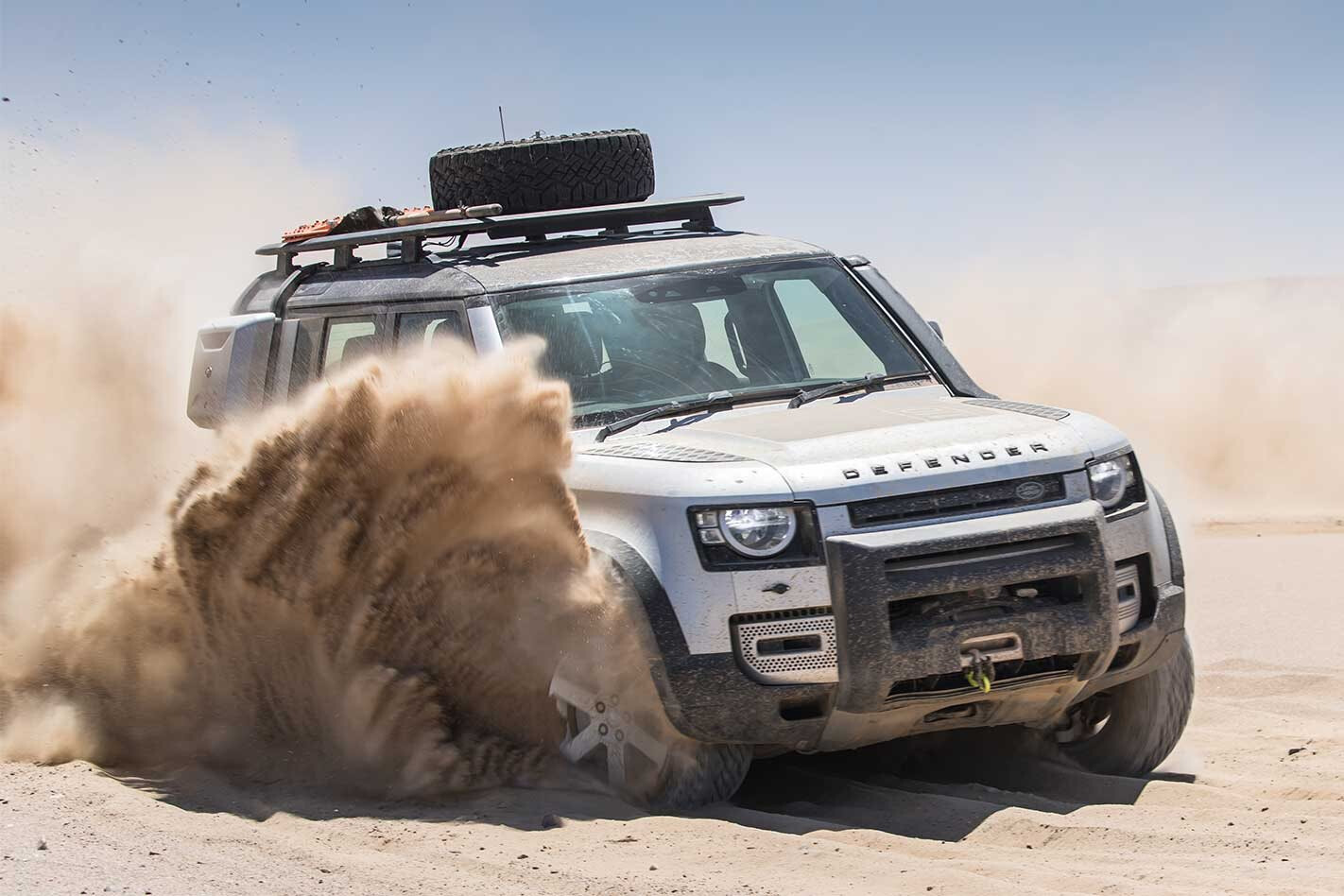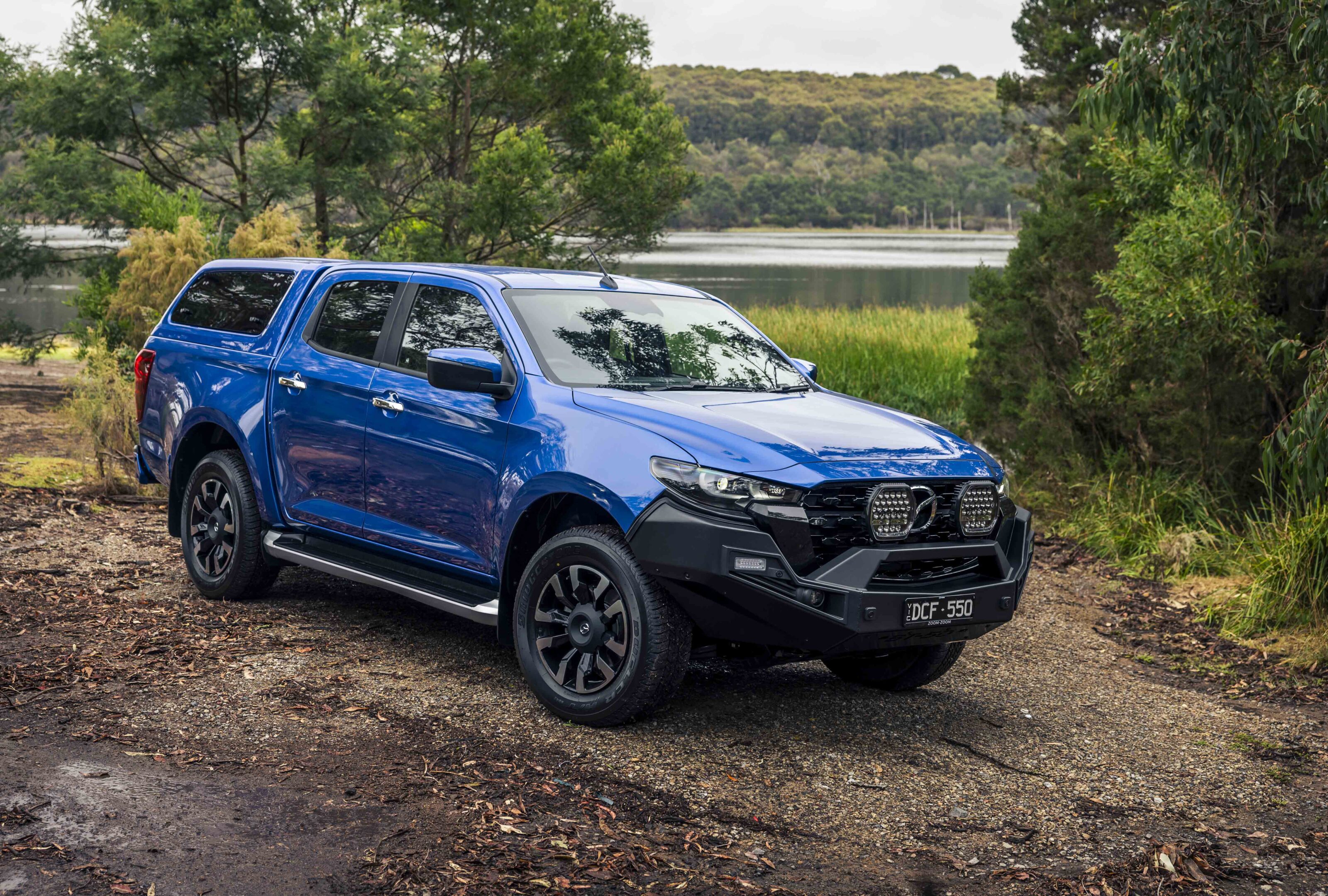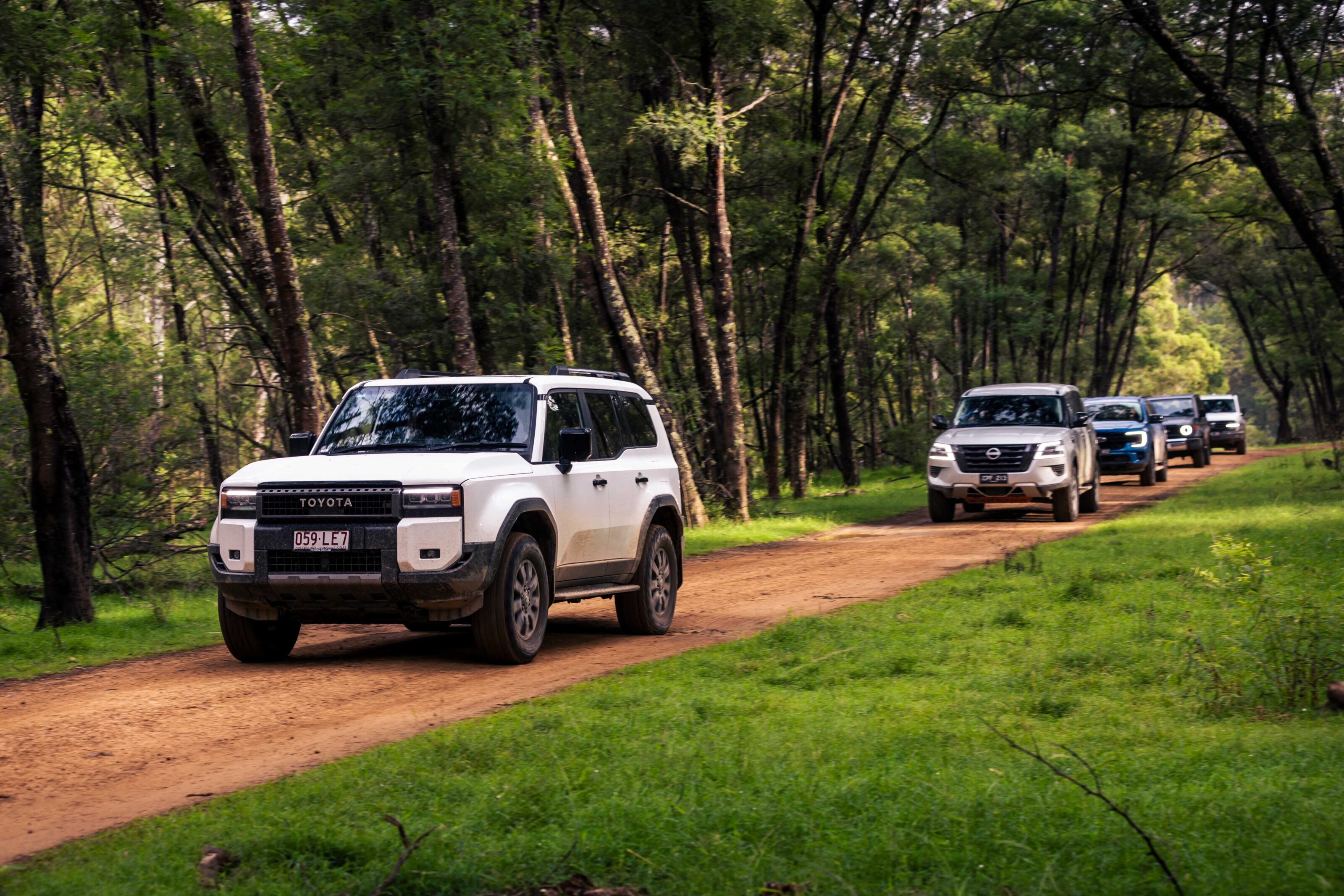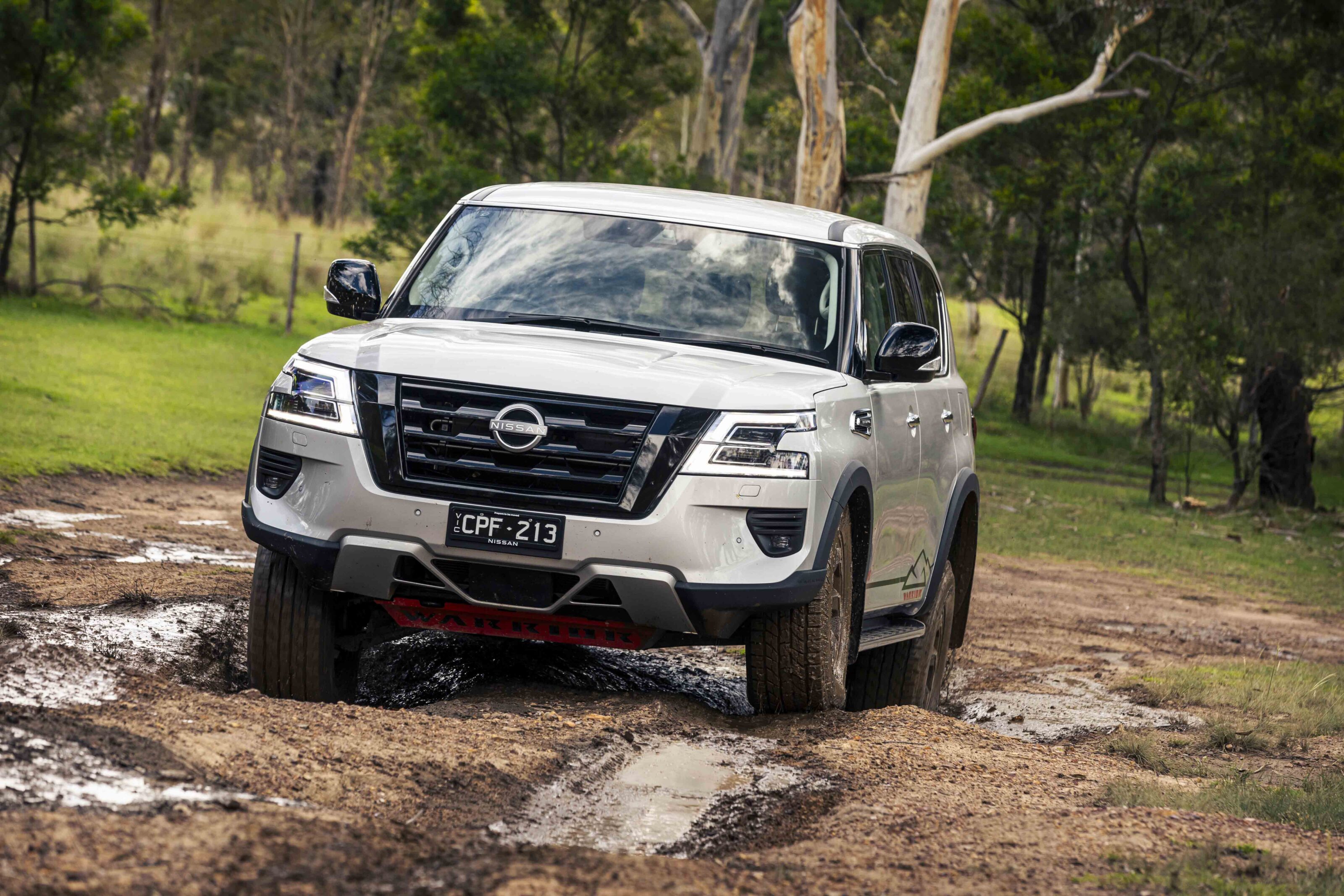FORGET everything you’ve come to know about the Land Rover Defender over the past decades. In fact, forget Defender all together and ignore the lettering across the front of this new model. Let’s just call it the new Land Rover.
Why, you ask? Because comparing this new Land Rover to any model that came before it is irrelevant. The L663 Land Rover bares no commonalities to the Defender and Series models of the past, save for a few token style elements that pay homage to the classic models.
MORE DEFENDER NEWS
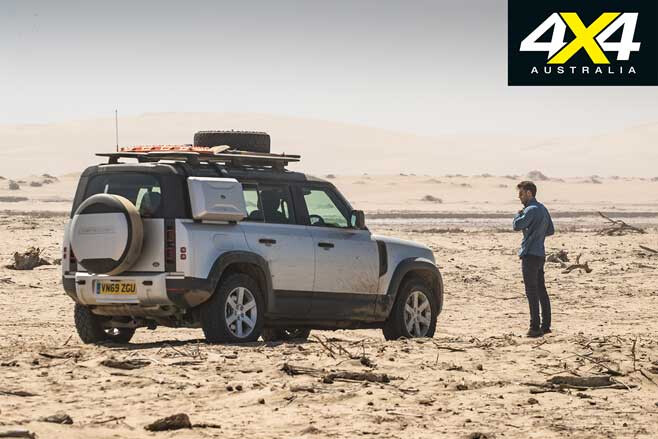
What we have here is an all-new Land Rover that applies the brand’s ‘Breadth of Capability’ slogan to a nameplate that was essentially a commercial vehicle. To do this Land Rover had to retain the go-anywhere off-road ability of the model with vastly improved on-road dynamics and manners. While other recent new Land Rovers have laid on the luxury to extend their breadth in that direction, the L663 is all about practicality and everyday usefulness to appeal to more buyers at a more affordable price point.
When the new L663 Defender arrives in Australia in August as the 110 wagon, it will start at $69,990 for the entry level D200 and run through a nine-variant range to the $137,100 X P400. The short wheelbase Defender 90 will arrive later in the year and is expected to reflect a similar model range at a $3-5K lower price point.
Engine variants
The model range includes three engine variants: two versions of the 2.0-litre diesel in the D200 and D240, plus the 3.0-litre six-cylinder turbocharged petrol P400. We’re yet to see a full list of features and equipment, but it will be interesting to see the difference between a $70K and a $140K version of the same vehicle. Notable is that none of the new Defenders will come with full carpets … even at $140K! If you want something a bit more refined over the vinyl floors, carpet mats will be available from the dealer.
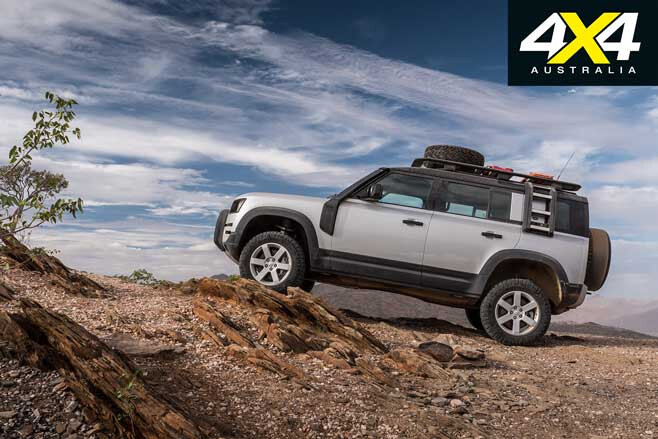
Dimensions and suspension
It’s hard not to draw comparisons with the old Defenders, and the 90 and 110 designations refer to the three-door short wheelbase and five-door long wheelbase wagons which respectively ride on 2587 and 3022mm wheelbases; not quite the 90 and 110 inches from where they take their names.
Like all modern Land Rovers, the L663 rides on an aluminium monocoque chassis with independent, height-adjustable air suspension. Some lower spec variants will be offered with coil springs but most new Defenders will ride on air, and it’s the height adjustability that allows them to maintain their off-road ability.
While the aluminium platform, dubbed D7X, is derived from the D7U platform that underpins the Range Rover and Discovery models, it is significantly tougher, employing steel instead of alloy sub-frames to mount the suspension to the chassis, which in turn employ larger bushes, knuckles and other components for enhanced durability over tough terrain.
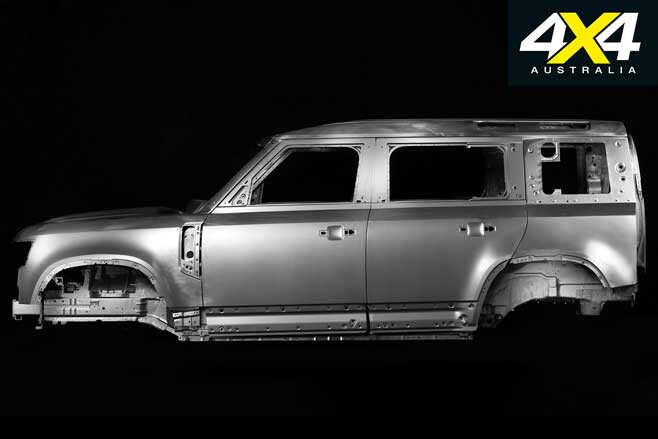
The D110 is a large wagon that can be equipped with third-row seating. A novel option is a centre ‘jump’ seat for the front row to allow three across up front so the 110 can be configured as a five-, six- or seven-seat vehicle. The jump seat comes as the Defender will be offered in some markets (not in Australia) as a commercial vehicle with only front seats, with panelled sides instead of windows, and riding on coil springs.
Interior
The cabin is much more user friendly than anything that has borne the Defender badge in the past. For starters it’s wider, so the driver’s right arm doesn’t have to reside outside the cabin and you won’t have a handbrake digging into your left leg and the door handle into your right. The cabin is spacious, open and airy throughout its big glasshouse including the ‘alpine’ windows in the roof that are a nod to past designs.
Another bit of nostalgia is the dash which incorporates the shelf and grab handle that will be familiar to anyone who has spent time in an old Land Rover. It’s fitted into a modern dash with a small – by modern Land Rover standards – screen for sat-nav, audio and other displays, while a stubby transmission shifter protrudes from a small panel of switches.
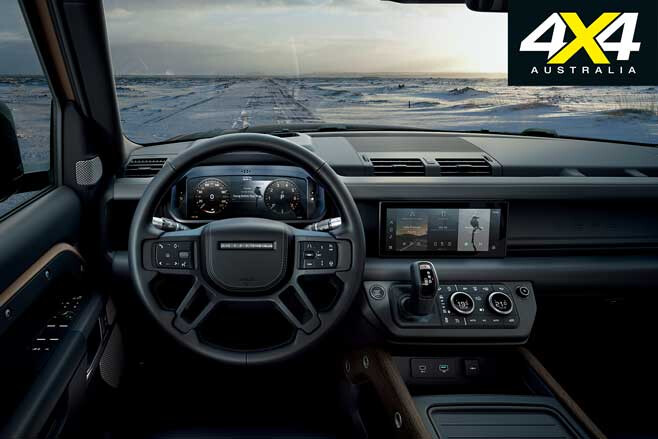
Terrain Response 2
The only transmission offered is an eight-speed automatic with no manual gearbox option. Four-wheel drive is full-time with high and low range and auto locking centre and rear diffs, and Terrain Response 2 is standard.
TR2 is now programmable for each setting, so you can dial in and save your preferences of how you like the feel of the steering, the transmission shift points and how quickly the differentials lock up. It’s a great system but it gets away from the simplicity of Land Rover’s groundbreaking original Terrain Response; although, you can always set and forget it in the Auto mode.
Drive impressions
Our first taste of the new Land Rover came in Namibia driving a D240 variant looking very traditional in its Pangaea Green paint with white roof and white steel wheels. The overall look of the new vehicle is sure to be polarising, as it takes no prisoners with a design that is modern while incorporating hues of the classic Land Rovers of the past.
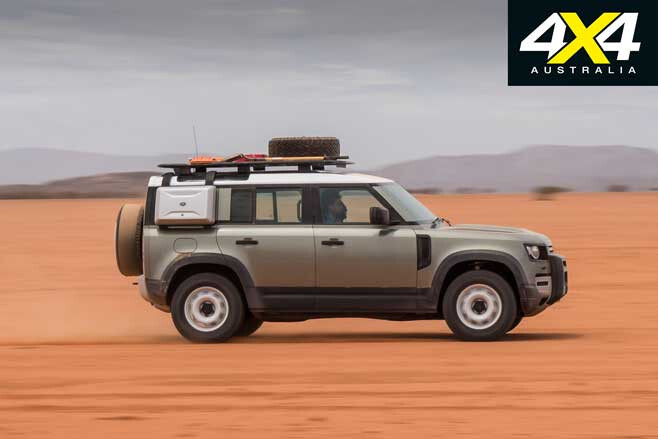
The vehicles on this trip were fitted with the Expedition package which includes a raised air-intake snorkel, expedition roof rack, a ladder to access the roof on the passenger’s side, and a storage box on the driver’s side. They were also fitted with Goodyear Duratrac all-terrain tyres to conquer sharp, rocky tracks in confidence.
The D240 is powered by the 2.0-litre Ingenium diesel engine that makes a sprightly 177kW and 430Nm, making light work of the steep African terrain and sandy tracks. The diesel engine is stunningly quiet both at idle and under load and you’d be hard-pressed to pick it as a diesel from within the cabin.
The eight-speed automatic transmission is perfectly matched to the modern powerplant, giving smooth and refined shifting. The engine is relatively small but the power and torque figures are on the money; though it will be interesting to drive this combination with a heavier load on board than what we had here.
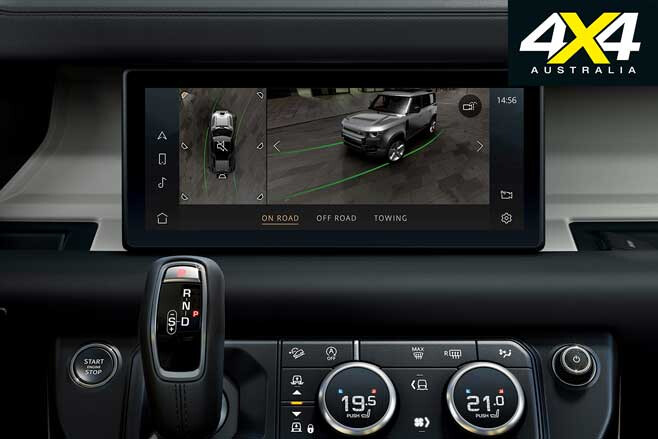
Speaking of loads, the new Defender has a payload of around 900kg depending on the spec of the vehicle (and hence its weight), and a towing capacity of 3500kg for Australia.
Our drive in Namibia took us northwest from the Kaokoland capital of Opuwo to a bush camp in a dry river bed on the escarpment above Van Zyl’s Pass. The tracks were mainly loose sand twisting through scrubby bush, and the new Defender handled them with ease, in a far more surefooted manner than any old Defender.
Van Zyl’s Pass is a steep, 600m, rocky descent from atop the escarpment, down towards the Atlantic coast, and it marked the first real off-road obstacle for us in the new car. With the four-wheel drive system locked in low range and the Terrain Response 2 set in Rock Crawl mode, the D240 edged its way down the tricky slope.
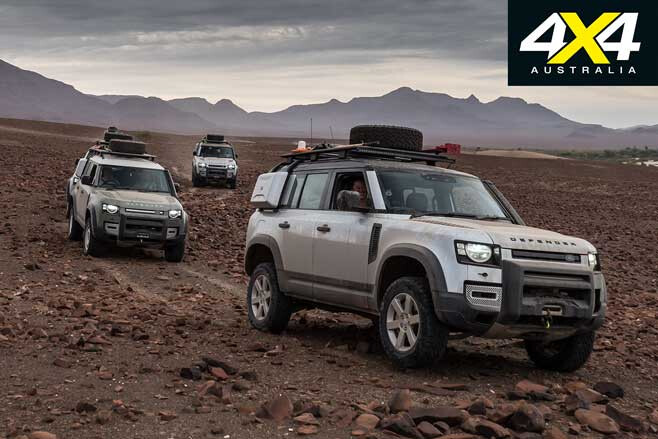
The car’s 360-degree cameras afford the driver a view in front of the vehicle and to the sides of the front tyres, which is helpful in such terrain where a sharp rock can easily slice a sidewall open; and believe me, you don’t want to be jacking up a car to change a flat here.
The low-range/low-gear engine braking is good, but, even so, the descent still required the driver to hover a foot over the brake to control speed. We found the sensitivity of the brake-by-wire system to be odd, providing little to no retardation at minimum brake input and then jolting the vehicle to a stop if squeezed a tad more.
We brought this up with chief engineer, Steven Frick, citing it as a problem, and he said we weren’t the first to note it and it is something the company will look at on the production vehicles. All of these cars were pre-production models and calibration of the brake-by-wire system should be easy to refine to get the right feel and performance. It’s something we’ll certainly look for when we get to drive production vehicles back here in Australia later this year.
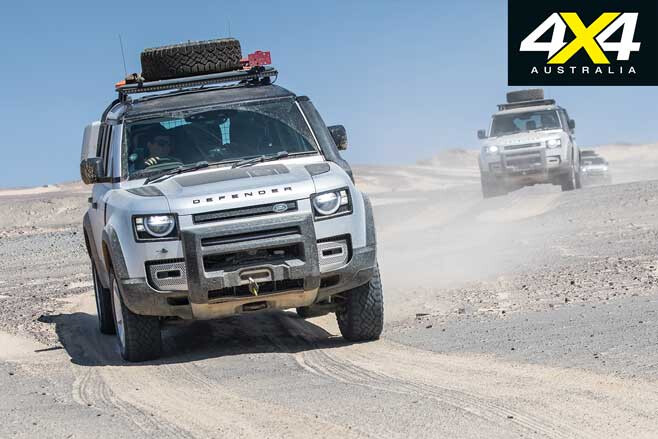
With the air suspension raised up to its highest you get a quoted 291mm of ground clearance (up from the standard 218mm) and we found this plenty to clear rocky obstacles with careful wheel placement. The performance of the suspension is limited when in its high setting and bangs as it tops-out over uneven surfaces, so you want to drop it back down as soon as possible. That said, Land Rover quotes 500mm of suspension travel which is pretty good for an independent design.
Other key figures for off-road use are 38°, 40° and 28° for approach, departure and ramp-over angles when the suspension is raised, and an impressive 900mm of wading depth without the raised air intake as fitted to these vehicles.
We got to test that out when we reached the Hoarusib River, which was dry just 24 hours earlier. Now it was flowing fast over the wide, sandy crossing and our Land Rover guide chose to walk it before driving across. It was waist deep and the current strong, but the vehicle crossed it without a problem. There’s a new wading mode in the Terrain Response which, if it detects the vehicle starting to float, can extend the suspension a further 70mm to try to find traction on the surface below.
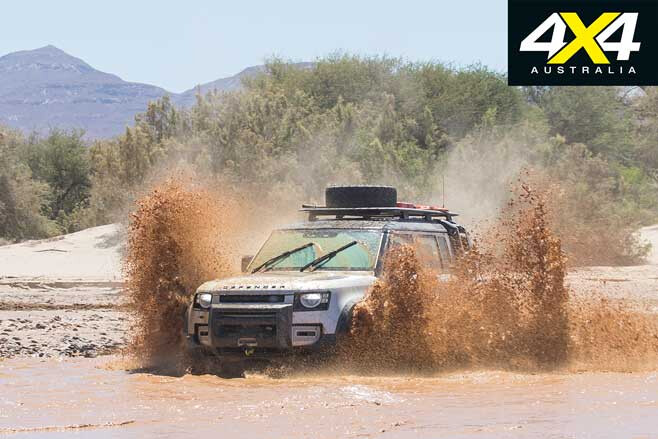
We also got to drive the P400 110, and what a pleasure that was. This is powered by Land Rover’s new 3.0-litre inline six-cylinder, turbocharged petrol engine, which is also boosted by an electric supercharger feeding from the 48-volt electrical system. The theory is that the electric supercharger provides the boost at low revs before the turbocharger wakes up as the revs climb.
It works too, with 294kW on tap and 550Nm from as low as 2000rpm. That torque feels almost diesel-like in its delivery, making the P400 a pleasure to drive both at low speed over off-road terrain and quicker over fast-flowing roads.
We didn’t get actual fuel figures on this drive, but at fill-up time the diesel D240s were taking almost half as much fuel as the petrol P400s, and that’s driving over the same 680km route, of which only 4km were on sealed roads.
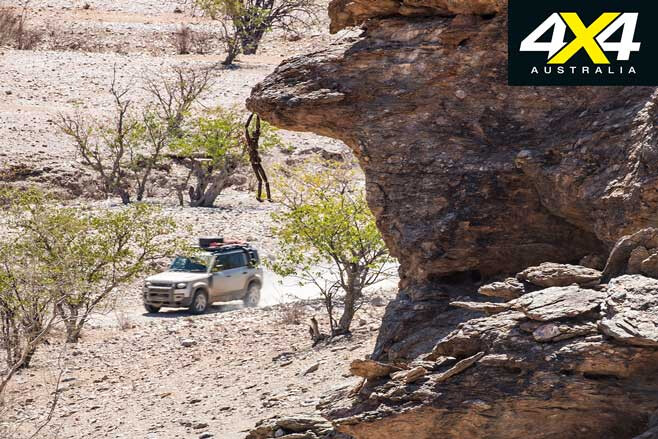
It was on these flowing open roads that the true ‘breadth of ability’ of the new Defender revealed itself. Never before has a Defender felt so composed at speed – it is a real confidence-inspiring high-speed tourer. The steering is perfectly weighted and the communication of the suspension through to the driver is superb for such a large vehicle. The L663 feels right at home on high-speed sand and gravel roads, which is something you would never have said about a Defender in the past.
It’s this new-found performance and on-road manners that make this new Land Rover such a revelation which, depending on sale price, should be hugely popular in a big country like Australia. Sure the base price starts around $70K, but we reckon you’ll be looking at a D240 for starters and then by the time you start ticking off the options you want, most buyers will be looking at a $90K purchase.
Even then it’s a lot of car for the money, but it’ll be competing with the V8 Nissan Patrol and Land Cruisers for the family fourbie buyer. We’re all for a new entry to the large 4×4 wagon market, and this new Defender has been worth the wait. And it’s just a few months more before we get to drive it on home soil.


